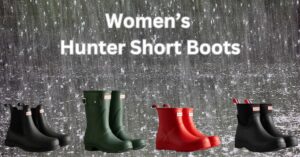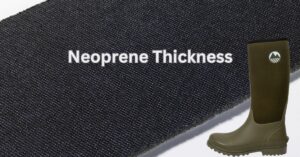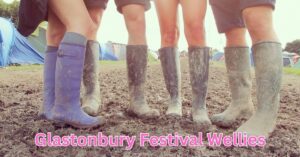Are Wellies Good For Snow?
Many of the features that make wellies good for wet conditions also make them well-suited for the snow. However, some wellies are much better suited for snowy conditions than others.
Features that make wellies good for the snow
Waterproof wellies
Just about all wellies are 100% waterproof. This is because nearly all wellies are made from either rubber or PVC, which are both waterproof materials. Having waterproof wellies is good to have when wearing them in the snow, but it isn’t essential. As long as the snow remains as snow, then boots do not need to be fully waterproof. In fact, footwear that has been specifically designed as ‘snow boots’ is often not 100% waterproof!
Warm wellie linings for snow
Protecting feet from the cold is generally considered as one of the most important features for footwear that is worn in the snow. This is where there can be a very big difference in wellies. Many cheaper wellies do not have any type of insulation lining the inside of the boot. This means that all that is keeping your feet protected from the cold is a few millimetres of rubber or PVC. However, there are premium wellie brands that have some type of insulating lining. The most popular and probably the most effective is neoprene or similar material. Having a relatively thin 5mm neoprene lining can make a huge difference to keeping feet warm n subzero temperatures. There other lining such as wool, faux-fur, leather, fleece etc which all help protect feet from the cold, but nearly as well as neoprene.
If you have boots without a lining you can wear thick socks or buy special welly socks which will help protect feet from the cold for a limited amount of time.
BEST WELLIE SOCKS
Last update on 2025-03-16 / Affiliate links / Images from Amazon Product Advertising API
Best type of sole for snow
In order to get good traction in snow, the sole of the wellies needs to have deep treads that can sink into the snow to provide the required grip. Fortunately, many wellies have deep treads as they have been designed to provide traction in muddy conditions. It is also beneficial to have a wide sole, that has a larger surface area. The increased surfaced area gives increased grip in snow
Wellies that have a thick soles gives the wearer extra insulation from the cold coming from the ground. Often wellies that have been designed as ‘working’ boots (Muck, Grubs) have thicker soles, compared to fashionable wellies (Hunter) and cheap wellies (Dunlop).
Toggle top wellies
Its not a common feature and usually found on kid’s boots, but there are some wellies that can be tightened at the top of the shaft using a string and a toggle The main purpose for having the adjustment is to prevent water dripping down in to the boot an also to help prevent heat escaping. Obviously this feature also benefits snowy conditions, preventing snow from going down the top of the boots and also keeping heat in the boots.
Dunlop Blizzard Boots with toggle top
Last update on 2025-03-09 / Affiliate links / Images from Amazon Product Advertising API
Height of wellies
Wellies come in a wide range of heights, but for snow, the best option is what are most commonly referred to as tall wellies. Tall wellies generally come up to a few inches below knee height. As they are tall it is far less likely that snow will get in over the top of the boots. Plus the additional height protects more of the leg from snow and cold.
FINAL THOUGHTS
If wellies have the right type of features, they can make excellent snow boots. Infact, wellies can be just as good in the snow as footwear that has been specifically designed for snow conditions.
Probably the most important feature that determines if wellies make good snow boots is that they are warm. This means they need some kind of insulating lining, ideally that would be neoprene.











